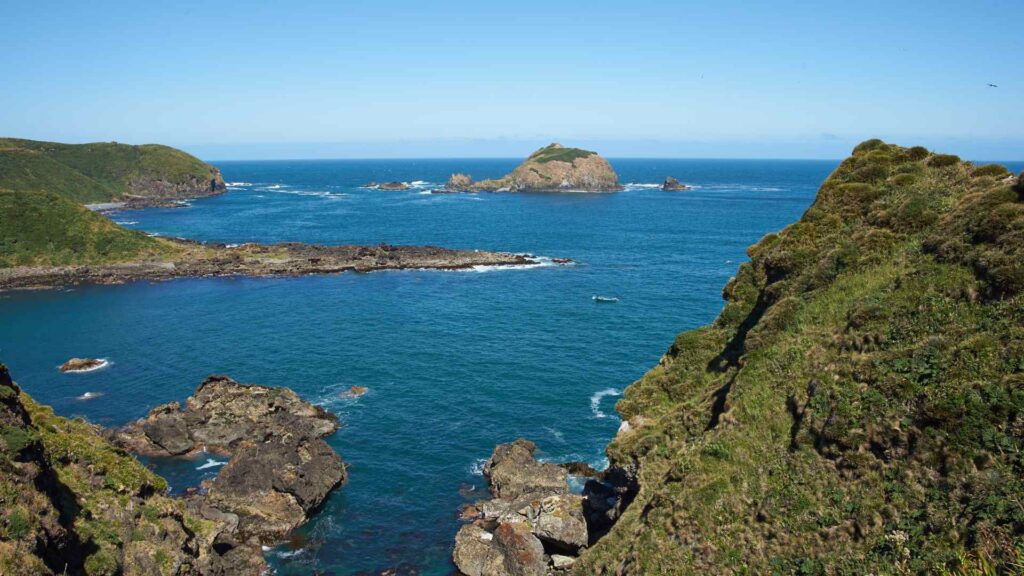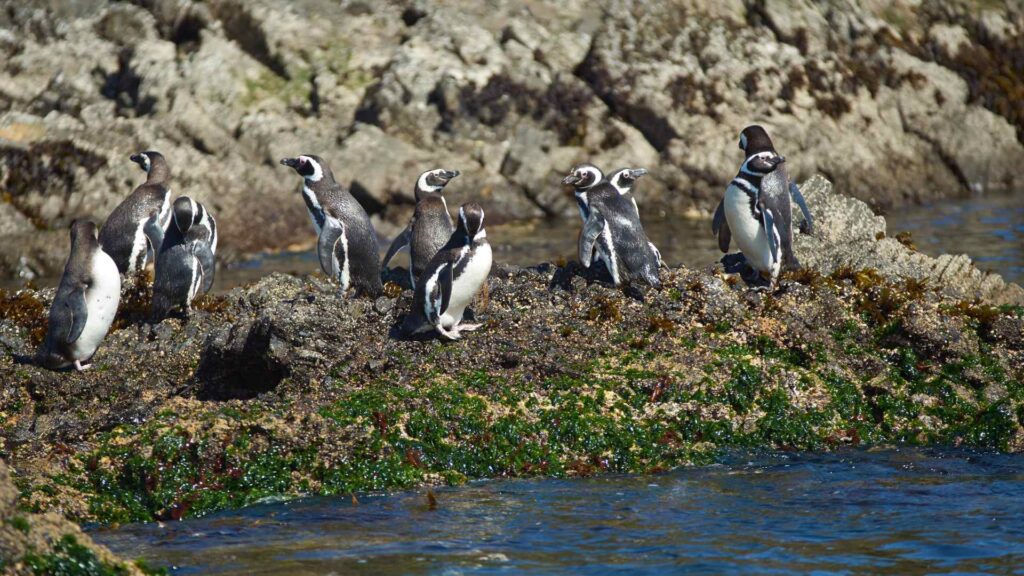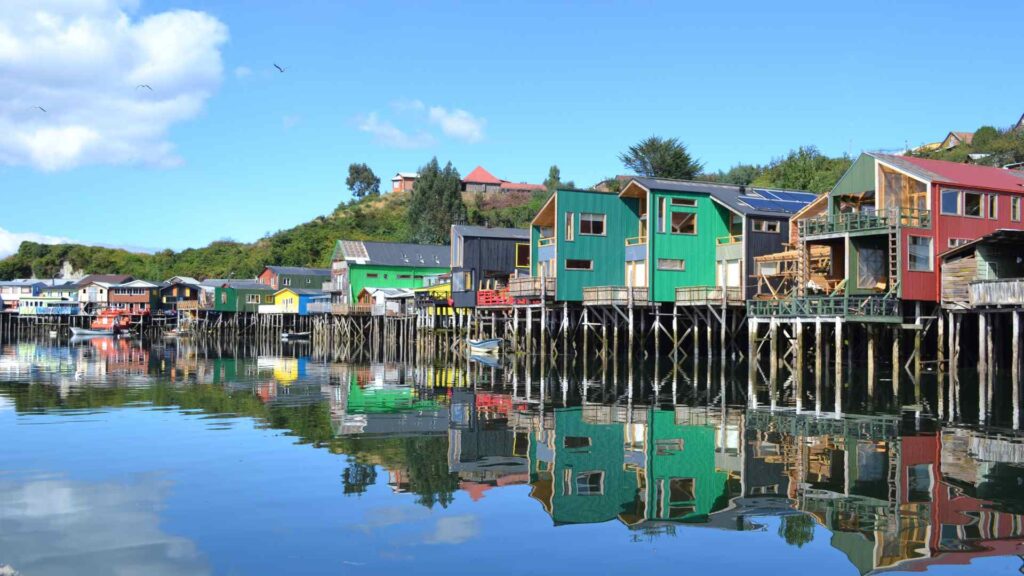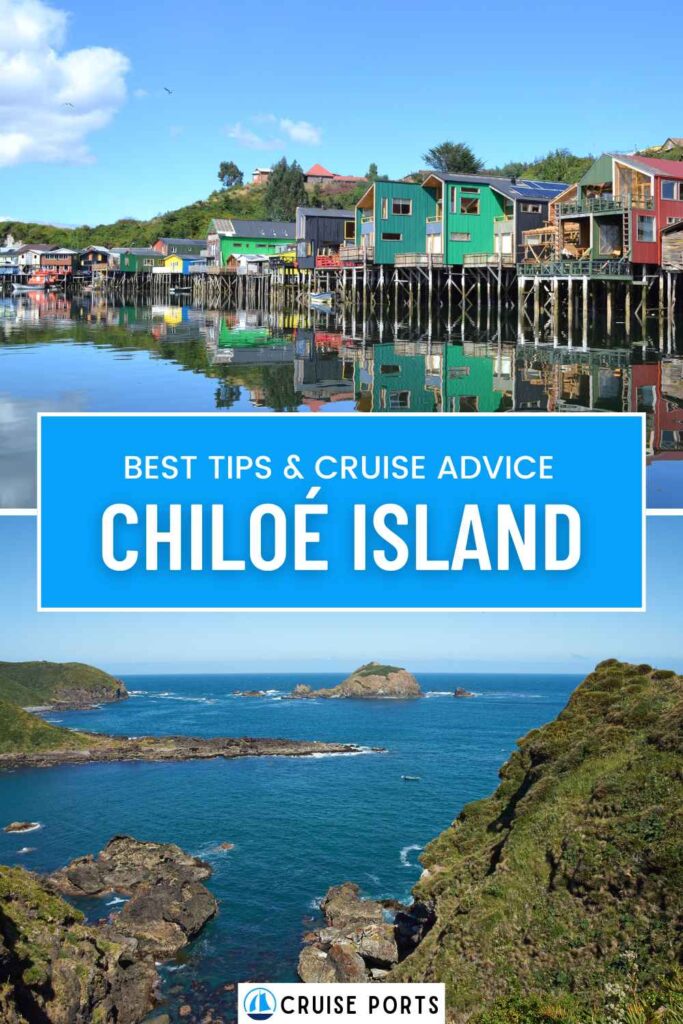Chiloé Island, nestled in the Chiloé Archipelago of southern Chile, is a mesmerizing destination for cruisers seeking natural beauty, rich culture, and unique experiences.
Renowned for its colorful stilt houses (palafitos), UNESCO-listed wooden churches, and enchanting myths, this island is a hidden gem for travelers.
The primary cruise port is located in Castro, the capital of Chiloé, which offers easy access to the island’s top attractions.
The port itself is well-equipped to welcome ships of varying sizes and serves as a gateway to both urban and rural wonders.

Why Chiloé Is a Must-Visit Stop for Cruisers
- Cultural Richness: Blend of indigenous Mapuche traditions and colonial influences.
- Natural Splendor: Rugged coastlines, lush forests, and wildlife spotting opportunities.
- Warm Hospitality: Friendly locals eager to share their stories and traditions.
Key Features of Castro Cruise Port:
- Proximity to Town: Only a short shuttle ride from downtown Castro.
- Passenger Services: Information centers, local crafts stalls, and transportation options.
- Ease of Access: Smooth tendering process for smaller ships docking offshore.
How to Get Around Chiloé Island from the Cruise Port
Navigating Chiloé Island is a breeze, whether you’re sticking close to the port or venturing out into the countryside.
Transportation Options:
- Shuttle Services: Most cruise lines provide complimentary or paid shuttles into Castro.
- Taxis and Collectivos: Affordable and convenient; these shared taxis operate along fixed routes.
- Car Rentals: Perfect for exploring at your own pace; available near the port.
- Tours: Guided excursions are a popular choice for accessing remote attractions.
Insider Tips for Getting Around:
- Confirm shuttle timings with your cruise line to avoid delays.
- Carry small Chilean pesos for taxis or collectivos, as credit cards aren’t widely accepted.
- Opt for a guided tour if you’re unfamiliar with the local terrain or language.

Top Attractions Near Chiloé Island Cruise Port
Chiloé Island is a treasure trove of cultural, historical, and natural wonders.
Whether you’re a history enthusiast, nature lover, or foodie, you’ll find plenty of memorable experiences.
Here’s a list of 15 must-see attractions and activities near the Chiloé Island cruise port.
1. Palafitos of Castro
Chiloé’s iconic stilt houses, or palafitos, are a photographer’s dream. These colorful wooden homes reflect the islanders’ ingenuity in adapting to tidal changes.
Stroll along the Gamboa Bridge for the best vantage point or take a boat tour for a unique perspective of these architectural marvels.
2. Chiloé National Park
Located about an hour from Castro, this sprawling park offers diverse ecosystems ranging from temperate rainforests to coastal dunes.
Popular activities include hiking, birdwatching, and exploring the Chepu River wetlands. Don’t miss the “Sendero de Tepual” trail, which winds through a magical moss-covered forest.
3. Churches of Chiloé
The island is home to 16 UNESCO-listed wooden churches, showcasing a blend of European design and indigenous craftsmanship.
The Church of San Francisco in Castro is the most famous, with its vibrant yellow and orange facade. Nearby, the Church of Rilán offers a quieter, rural charm.
4. Dalcahue Artisan Market
This bustling market, a short drive from Castro, is a hub for local crafts.
Shop for handmade textiles, wooden carvings, and pottery while savoring freshly prepared empanadas and seafood. Sundays are especially lively with local vendors showcasing their best wares.
5. Penguin Watching at Puñihuil
A 45-minute drive from the port takes you to Puñihuil, where you can observe Humboldt and Magellanic penguins in their natural habitat.
Guided boat tours offer close-up views of these charming birds alongside sea otters and cormorants. It’s a highlight for wildlife enthusiasts.
6. Ancud and Fort San Antonio
The town of Ancud is a gateway to Chiloé’s history. Explore the Museo Regional de Ancud to learn about the island’s cultural heritage, then visit Fort San Antonio, a historic fortification offering panoramic views of the coastline. Nearby, the local market is perfect for a quick snack or souvenir.
7. Isla Quinchao
Accessible via a short ferry ride from Dalcahue, Isla Quinchao is known for its charming villages, peaceful landscapes, and historical churches. The Church of Achao, the oldest wooden church in Chiloé, is a must-visit for history buffs.
8. Tantauco Park
Adventure seekers will love Tantauco Park, a remote nature reserve featuring pristine lakes, dense forests, and wildlife like the pudú, one of the world’s smallest deer. Multi-day hiking trails and glamping options make it a paradise for eco-tourists.
9. Chepu River Valley
This serene valley offers kayaking and boat tours through submerged forests, a result of past seismic activity. It’s also an excellent spot for birdwatching and enjoying Chiloé’s tranquil beauty.
10. Cucao Village
Nestled on the edge of Chiloé National Park, Cucao is a small village known for its picturesque landscapes and rich mythology. It’s a gateway to hiking trails leading to stunning beaches and viewpoints.
11. Castro Cathedral
Located in the heart of Castro, the Cathedral of Our Lady of Sorrows is a striking landmark. Its neo-Gothic architecture, vibrant colors, and intricate wooden interiors make it a fascinating stop.
12. Chilote Mythology and Legends Tour
Immerse yourself in Chiloé’s rich folklore by exploring sites associated with mythical creatures like El Trauco and La Pincoya. These guided tours often include storytelling sessions by locals and visits to scenic spots linked to the island’s legends.
13. Whale Watching in Chiloé
Between December and April, embark on a whale-watching tour to spot blue and humpback whales migrating through the Chiloé Channel. These tours often include marine biologists who provide insights into the region’s marine life.
14. Yaldad Indigenous Community
Visit this Mapuche Williche community to learn about their ancestral traditions, crafts, and relationship with nature. Cultural tours offer hands-on experiences like weaving and traditional cooking.
15. Caves of Anzota
Located along the rugged coastline, these caves are a geological wonder. Explore their natural formations and enjoy breathtaking views of the Pacific Ocean. It’s a great place for photography and solitude.
Bonus Activity: Take a Ferry Ride to Other Islands
Chiloé Archipelago has dozens of smaller islands waiting to be explored. Take a ferry to Lemuy Island for more picturesque churches and tranquil countryside or explore Mechuque Island, known for its traditional Chilote houses.
Tips for Planning Your Visit:
- Guided Tours: Many of these attractions can be bundled into half- or full-day tours for ease and convenience.
- Self-Guided Adventures: Rent a car or use collectivos for more flexible itineraries.
- Pack Accordingly: Wear comfortable shoes and layers to adapt to varying weather conditions.
From the enchanting palafitos to the mystical tales of the Chilote people, these 15 attractions ensure your visit to Chiloé Island is nothing short of extraordinary. Whether you’re exploring on your own or with a guided tour, the island’s charm will leave a lasting impression.

What to Eat on Chiloé Island: A Culinary Journey
Chiloé’s cuisine is a delightful fusion of land and sea, with hearty dishes that reflect the island’s agricultural heritage and coastal bounty.
Must-Try Local Dishes:
- Curanto: A traditional feast cooked in an underground pit, featuring shellfish, meat, potatoes, and milcao (potato bread).
- Cazuela de Mariscos: A flavorful seafood stew packed with fresh ingredients.
- Chochoca: Grilled potato flatbread often served with local cheese or smoked meat.
Where to Eat:
- Local Markets: Dalcahue and Castro markets serve freshly prepared dishes at affordable prices.
- Seaside Restaurants: Enjoy meals with waterfront views at eateries like Mercadito de Castro.
- Food Tours: Join a guided tour to sample multiple dishes and learn about their origins.
Pro Tip:
Pair your meal with a glass of Chilote cider, a refreshing beverage made from locally grown apples.
Best Excursions for Chiloé Island Cruisers
Cruise excursions are an excellent way to make the most of your stop at Chiloé Island. Whether you’re an adventurer, history buff, or wildlife enthusiast, there’s something for everyone.
1. Ancud and Fort San Antonio Tour
Visit the historic town of Ancud and explore Fort San Antonio, a remnant of Chile’s colonial past. This excursion also includes stops at local museums and markets.
2. Penguin Watching at Puñihuil
A once-in-a-lifetime opportunity to see Humboldt and Magellanic penguins in their natural habitat. Tours often include boat rides and expert commentary.
3. Mythology and Legends Tour
Dive into Chiloé’s folklore with a guided tour exploring its mythical creatures, haunted forests, and legendary tales.
Shopping on Chiloé Island: What to Buy and Where
Chiloé’s vibrant artisan culture makes it a fantastic place for unique souvenirs.
Popular Souvenirs:
- Wool Products: Handwoven scarves, blankets, and sweaters made from sheep’s wool.
- Wooden Crafts: Intricately carved figurines and utensils.
- Seafood and Spices: Packaged smoked salmon and merken (smoked chili powder).
Best Shopping Spots:
- Castro Market: A hub for local crafts and fresh produce.
- Dalcahue Market: Known for its high-quality textiles and traditional Chilote items.
Essential Tips for Visiting Chiloé Island Cruise Port
Make your visit to Chiloé Island smooth and enjoyable with these handy tips:
- Weather Preparedness: Chiloé’s weather is unpredictable—bring a waterproof jacket and layers.
- Currency: The Chilean peso is the official currency; cash is preferred in smaller establishments.
- Language: Basic Spanish phrases go a long way, as English isn’t widely spoken.
- Time Management: Plan your itinerary to accommodate tendering and travel times.
- Eco-Conscious Travel: Respect the island’s pristine environment by following “leave no trace” principles.
Frequently Asked Questions About Chiloé Island Cruise Port
1. How far is the cruise port from Castro?
The port is just a 10-15 minute shuttle ride from downtown Castro, depending on traffic.
2. What’s the best time to visit Chiloé Island?
The best time is during the austral summer (December to February) when the weather is mild and festivals abound.
3. Are there ATMs near the port?
Yes, ATMs are available in Castro, but it’s wise to carry cash as smaller vendors may not accept cards.
4. Can I explore the island without a tour?
Absolutely! Taxis, car rentals, and collectivos make independent exploration easy and rewarding.
5. Is Wi-Fi available at the cruise port?
Wi-Fi is limited but can be found in certain cafes and public areas in Castro.
6. What wildlife can I see on Chiloé Island?
Expect to see penguins, sea lions, native deer, and a variety of seabirds, especially in nature reserves.
Conclusion
Chiloé Island is a captivating cruise destination, blending cultural treasures, stunning landscapes, and unforgettable culinary experiences.
Whether you’re strolling through Castro’s vibrant streets, savoring curanto, or marveling at the island’s natural wonders, Chiloé offers something truly special for every traveler.


